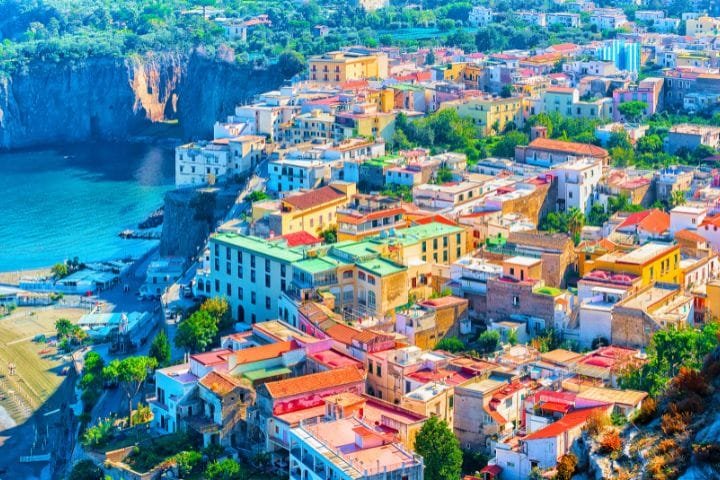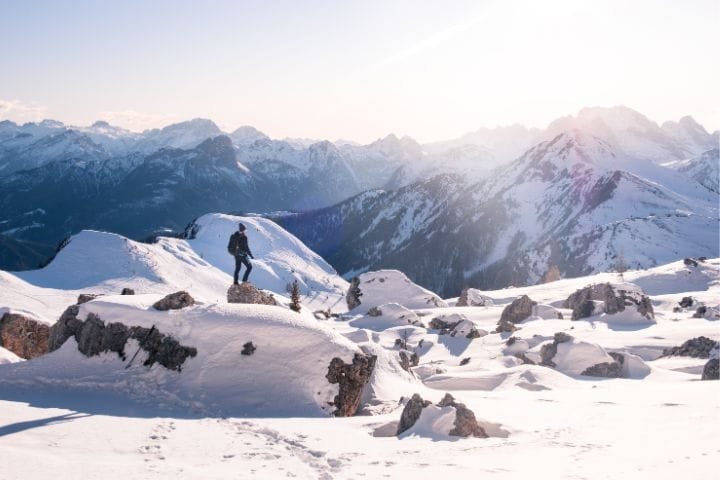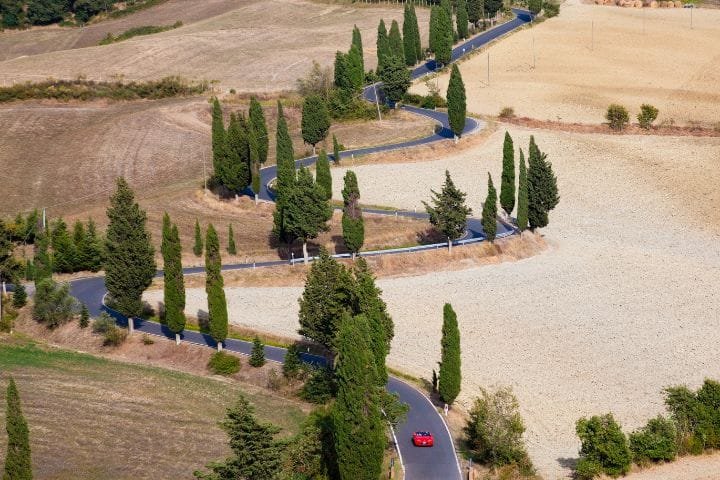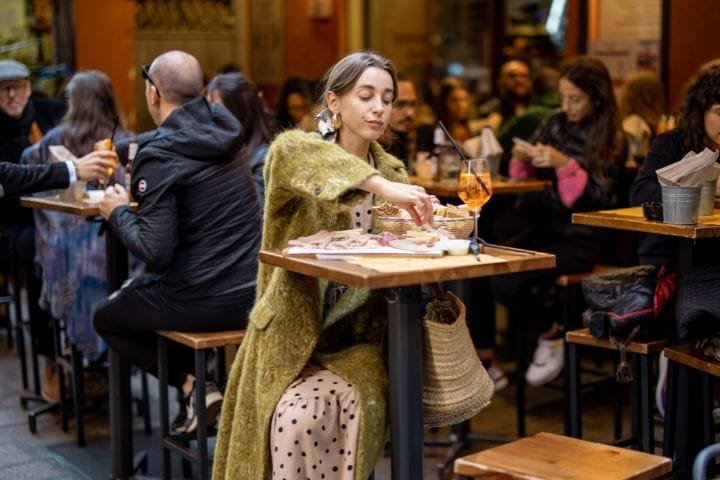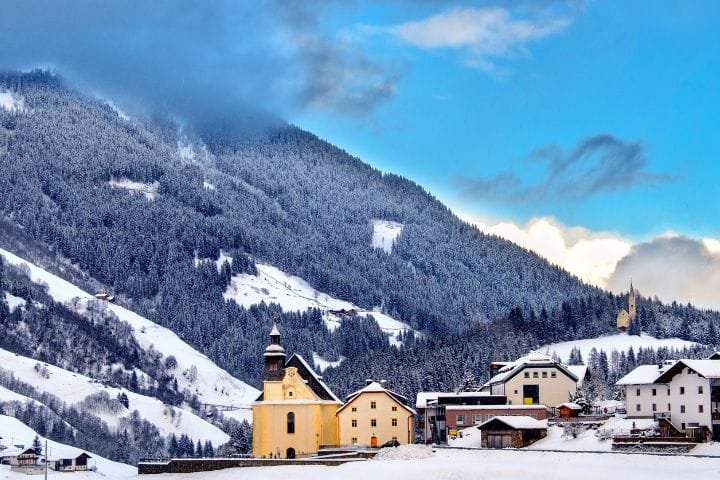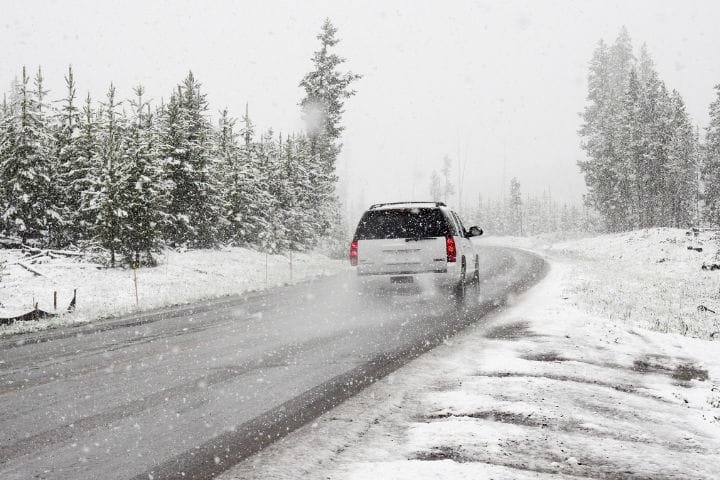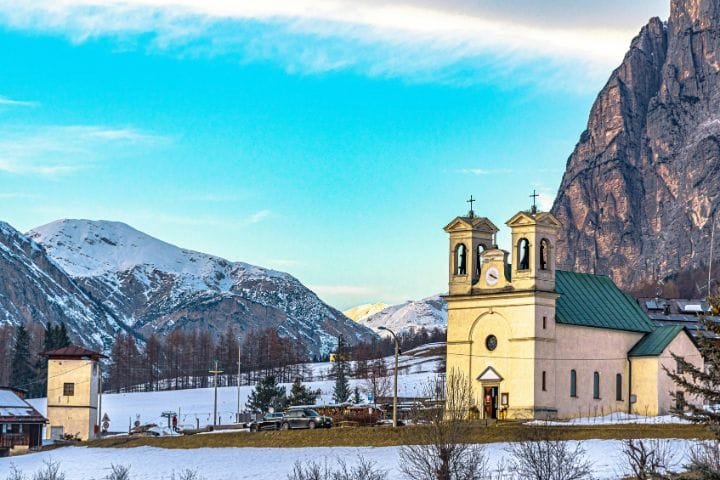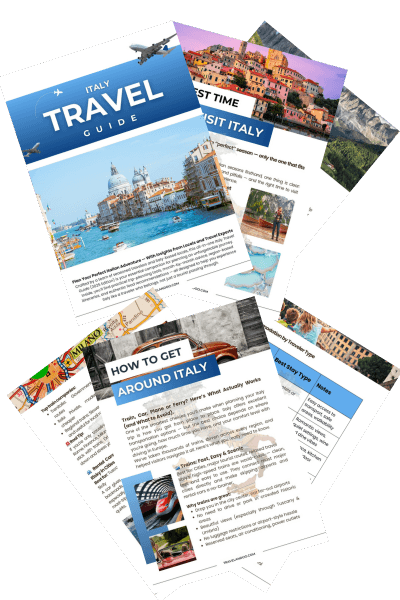Italy Food Road Trip Itinerary: The Ultimate 2025 Culinary Journey

by Abu | Last Updated December 9, 2025
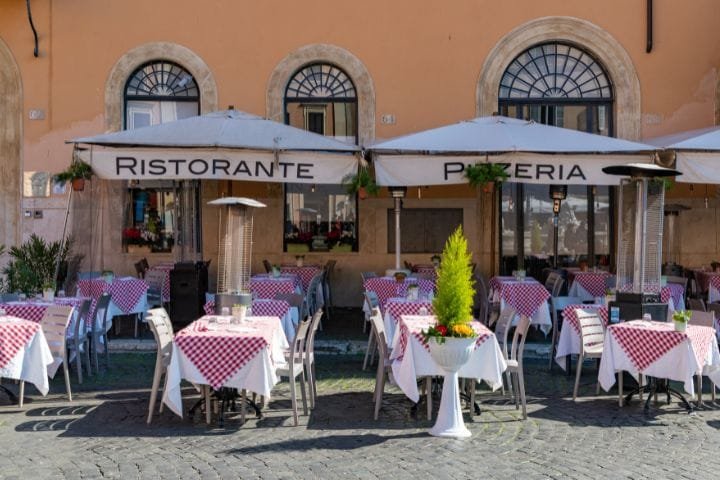
Look, I’ve been calling Italy home for twenty years now, and people always ask me the same question: “How do I plan the perfect Italian food road trip?” The answer isn’t simple because, honestly, every region here thinks they invented good food – and they’re all kinda right!
After driving thousands of kilometers chasing the perfect plate of pasta over the past two decades (and getting into heated debates with locals about whose nonna makes the best ragu), I’ve cracked the code. Italy has over 500 cheese varieties and more pasta shapes than you can count, but that’s just the appetizer to what awaits you.
My first real Italian food awakening happened in a cramped trattoria near the Spanish Steps. I ordered what I thought was regular spaghetti carbonara, and the owner, this fierce little woman named Giulia, nearly threw me out for asking for parmesan cheese. “Pecorino Romano only!” she yelled. That silky, perfectly emulsified sauce changed my entire perspective on Italian cuisine.
This isn’t just another Italy food road trip itinerary guide. It’s twenty years of food failures, incredible discoveries, and countless gelato stops condensed into one epic roadmap for your taste buds.
Planning Your Italian Food Road Trip: Essential Preparation Tips
Planning a food road trip here requires strategy, patience, and a flexible waistband. I’ve learned this through some spectacular failures and unexpected victories.
Timing your trip is absolutely crucial. The sweet spot is April through June or September through November – you’ll avoid the summer crowds and catch incredible seasonal ingredients. Spring brings wild asparagus and artichokes, while autumn delivers truffle season and grape harvest celebrations.
Here’s what most people get wrong about car rentals in Italy:
- Skip the international chains – Local companies like Maggiore or Sicily by Car offer better rates and actually know the roads
- Always get GPS included – Don’t rely on your phone; Italian mountain roads will drain your battery in hours
- Choose automatic transmission – Trust me, hill starts in Rome traffic with manual transmission is a nightmare
- Get full insurance coverage – Italian drivers are… enthusiastic, and parking spaces are creative
Budget-wise, expect to spend €100-150 per day per person if you want to eat authentically. That sounds steep until you realize you’re not just buying meals – you’re purchasing centuries of culinary tradition. A proper lunch at a family osteria runs €40-50, while street food can fill you up for €10-15.
Download these apps before you leave: Slow Food (for authentic restaurant recommendations), Waze (better than Google Maps for Italian roads), and Google Translate with camera function.
Restaurant reservations are essential, especially in smaller towns where good places only have 8-10 tables. Call ahead or ask your hotel to help – Italians respect the effort, even if your Italian is terrible.
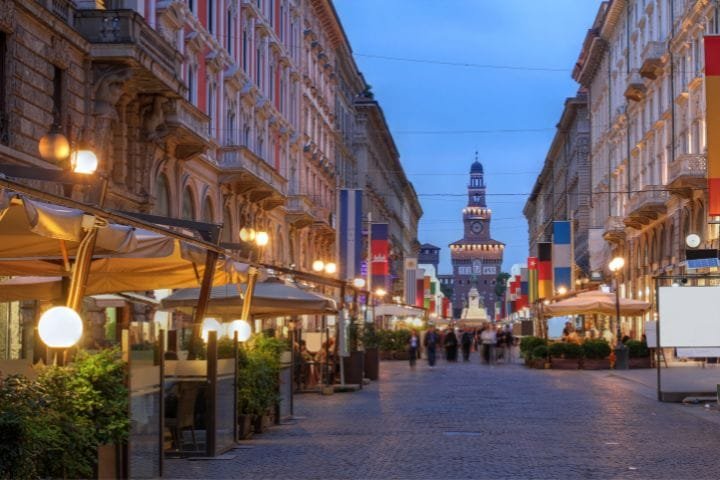
🧭 Plan a Smooth Italian Food Road Trip
Get the right car and understand the basics before you set off eating your way across Italy.
Get all the essentials from the ultimate Italy road trip guide → How to Plan a Perfect Italy Road Trip: Complete Guide
Choose the best rental car for tight villages & foodie stops → Best Car for Italy Road Trip — Complete Guide
Learn how ZTL zones work so you don’t get fined in historic centers → Italy ZTL Zones Driving Guide
Estimate fuel + toll costs to plan your budget for food splurges → Italy Toll Roads & Telepass Guide
Northern Italy Food Road Trip Route: From Piedmont to Veneto
Northern Italy is where sophistication meets comfort food, and the results are spectacular. The pace up here is different – more methodical, more focused on technique and tradition.
Piedmont during white truffle season (October-December) is pure magic. Alba transforms into this incredible food festival where the entire town smells like earth and luxury. I once spent €60 on a tiny shaving of white truffle at Osteria del Borgo, and watching the server’s ritualistic preparation was worth every euro.
The Barolo wine region deserves at least two days. These wines are serious business – complex, powerful, and designed to pair with the rich regional cuisine. Book a tasting at Marchesi di Barolo; their wine cellar tour includes tastings of vintages dating back decades.
In Lombardy, Milan’s food scene extends far beyond fashion week events. Ratanà serves risotto alla Milanese that’ll ruin you for all other rice dishes. The chef uses a 200-year-old technique, slowly stirring saffron-infused stock until the rice reaches this perfect, creamy consistency that coats your spoon.
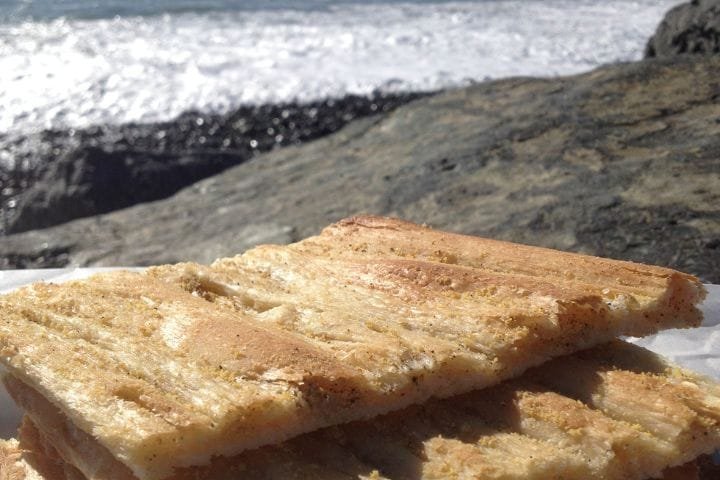
Liguria surprised me with its deceptive simplicity. Genoa’s focaccia is nothing like what you think you know – it’s thin, crispy, and brushed with herb-infused olive oil. The locals eat it for breakfast, lunch, and afternoon snacks. Try Antica Osteria di Vico Palla, but arrive early because they sell out by 2 PM.
- Best driving route: Turin → Alba → Milan → Genoa → Bologna (5-7 days minimum)
- Must-try specialties: White truffles, Barolo wine, risotto alla Milanese, fresh pesto, mortadella
- Hidden gem: Osteria del Borgo in Alba – family-run for three generations
- Pro tip: Book truffle hunting experiences in advance; they fill up fast during the season
Emilia-Romagna is where Italian food gets serious. This region produces Parmigiano-Reggiano, Prosciutto di Parma, and traditional balsamic vinegar. The Consorzio del Formaggio Parmigiano-Reggiano offers factory tours where you’ll watch them make 80-pound cheese wheels using techniques that haven’t changed in 900 years.
🍷 Extend Your Northern Italy Food Journey
From Alpine wine villages to lakefront aperitivo — add more northern flavors to your trip.
- Explore Northern Italy’s lakes & mountains with amazing farm-to-table food → Northern Italy Road Trip Itinerary
- Discover authentic food stops in lesser-known northern towns → Hidden Gems Italy Road Trip
Central Italy Culinary Journey: Tuscany, Umbria, and Lazio Highlights
Central Italy is a comfort food territory – hearty, soulful dishes that stick to your ribs and warm your heart. The landscapes are postcard-perfect, and the food matches the scenery.
Tuscany’s reputation for incredible food is well-deserved, but you need to know where to look. Dario Cecchini’s butcher shop in Panzano is legendary – this guy treats meat like art. His bistecca alla Fiorentina is a religious experience, served exactly medium-rare with just salt, pepper, and olive oil. For a full dining experience, lunch or dinner at his Officina della Bistecca restaurant is available at a fixed price of €50 per person, including a multi-course meal with wine and dessert.
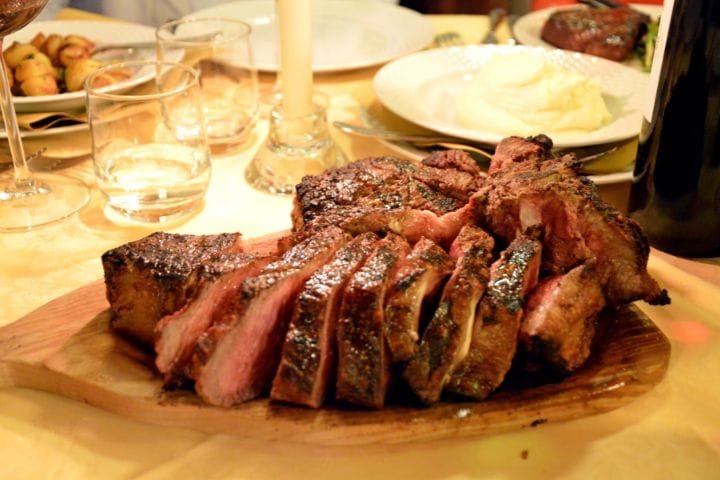
The Chianti wine region offers more than just wine tastings. Small family vineyards like Castello di Brolio provide intimate tours that include their fascinating history dating back to 1141. Their wine library contains vintages from the 1800s, and tastings include perfectly aged Chianti Classico paired with local cheeses.
Umbria remains Italy’s best-kept culinary secret. Norcia’s famous for its prosciutto and wild boar products, but the entire region specializes in dishes you won’t find elsewhere. I stumbled into Salumeria Ansuini during a thunderstorm, and the owner spent three hours teaching me about traditional curing methods while we waited out the weather.
Here’s what makes Umbrian cuisine special:
- Black truffles – Less expensive than white truffles but equally delicious
- Wild boar ragu – Slow-cooked for hours with local wine and herbs
- Pecorino di Norcia – Aged sheep cheese with incredible depth
- Strangozzi pasta – Hand-rolled thick noodles perfect for truffle sauces
- Sagrantino wine – Bold red wine that pairs perfectly with game meats
Rome is where everything clicked for me about Italian food philosophy. Forget the tourist traps near major monuments and head straight to the Testaccio neighborhood. This former slaughterhouse district now houses some of Rome’s most authentic restaurants, serving traditional dishes that haven’t changed in centuries.
Da Checchino dal 1887 specializes in quinto quarto – the “fifth quarter”. Their pajata (intestines of milk-fed calves) sounds intimidating, but tastes incredible. If that’s too adventurous, their cacio e pepe demonstrates perfect technique – just aged pecorino, black pepper, and starchy pasta water creating silky magic.
🌻 Food, Wine & Rolling Hills of Tuscany
Turn this into a full Tuscan flavors road trip.
Savor Chianti wines and Val d’Orcia foodie towns → Tuscany Road Trip Itinerary
Add romantic food spots—cheese farms, vineyards, sunset trattorias → Romantic Italy Road Trip
Southern Italy and Sicily Food Adventure: From Naples to Palermo
Southern Italy is where Italian food gets wild, passionate, and absolutely addictive. The flavors are bolder, the portions are generous, and every meal feels like a celebration.

Naples is pizza heaven, but not how you might expect. L’Antica Pizzeria da Michele has operated since 1870 with the same menu: margherita and marinara pizzas. That’s it. The dough is soft and chewy, the tomato sauce is bright and acidic, and each pizza costs €4.50. They’re not changing the recipe anytime soon, and honestly, perfection doesn’t need improvement.
The pizza Napoletana technique is specific and protected:
- Dough fermentation: Minimum 24 hours, often 48-72 hours
- Oven temperature: Exactly 485°C (905°F) in wood-fired ovens
- Cooking time: 60-90 seconds maximum
- Toppings: San Marzano tomatoes, buffalo mozzarella, fresh basil, olive oil
- Size: 35cm diameter with raised, leopard-spotted crust edges
The Amalfi Coast combines stunning scenery with incredible seafood. In Positano, Da Adolfo is a beach restaurant accessible only by boat. Their seafood risotto incorporates mussels pulled from the water that morning, cooked over open flames that give everything a subtle smoky flavor. Reservations are essential, and the boat ride is part of the experience.
Sicily‘s street food culture is absolutely insane in the best possible way. Palermo‘s markets assault your senses – vendors shouting in rapid-fire dialect, the smell of grilled meats mixing with fresh seafood, and colors that seem impossible. Antica Focacceria San Francesco has operated since 1834, serving arancini, which are meals in themselves. Skip the basic ones tourists typically order and try spinach-ricotta or ragu versions instead.
Puglia deserves more attention than it gets. In Bari‘s old town, elderly women called “nonne” make fresh orecchiette pasta right on the street. You can watch them work their magic, rolling and shaping each piece by hand. A bag of fresh pasta costs €3-4 and tastes better than most restaurant dishes.
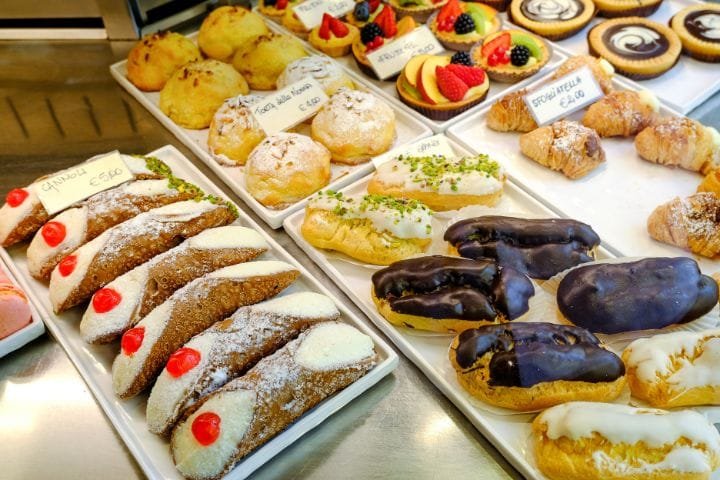
- Must-try Sicilian street foods: Arancini, cannoli, panelle (chickpea fritters), sfincione pizza
- Best markets: Ballarò and Vucciria in Palermo, Mercato di Porta Nolana in Naples
- Seafood specialties: Crudo di ricciola, spaghetti alle vongole, frittura mista
🌞 Flavors of the South — Coastal & Island Beauty
Seafood, olive oil mills, and volcanic wines await.
- Discover the best Puglia food stops along the coast → Puglia Road Trip Itinerary
- Combine food, culture & beaches on a Sicily road trip → Sicily Road Trip Itinerary
Must-Visit Italian Markets and Food Festivals During Your Road Trip
Italian markets aren’t just shopping destinations – they’re cultural immersion experiences that reveal the soul of local food culture. Every city has its own market personality, and learning to navigate them like a local is essential.
Florence’s Mercato Centrale gets touristy, but the upstairs food court houses some incredible vendors. Nerbone has served lampredotto sandwiches since 1872 – it’s tripe, which sounds awful but tastes amazing. The sandwich costs €3.50 and beats most restaurant meals. The trick is getting there before 1 PM when locals grab lunch.
Bologna’s Mercato delle Erbe is where actual Bolognesi shop for daily ingredients. Arrive around 8 AM when vendors are setting up fresh displays. The cheese vendor in the corner, Gastronomia Gilberto, encourages tasting before buying. Their 25-year-old balsamic vinegar costs €25 for a small bottle, but it’s liquid gold.
Rome’s Testaccio Market operates in a modern building but maintains an old-school market culture. Vendors know each other and actively recommend their neighbors’ specialties. I once bought pecorino from one vendor who sent me to another for fresh bread. It felt like a delicious treasure hunt.
Plan Your Trip with Our Favorite Booking Tools
Authentic Italian Restaurants and Hidden Culinary Gems
Finding authentic restaurants requires detective work, but the payoff is incredible. Italians are passionate about food, so even average places usually excel at something. The challenge is avoiding tourist traps disguised as authentic trattorias.
My foolproof authentication method: observe the clientele. If locals are eating there, especially during lunch, it’s legitimate. Multilingual menus are red flags, as are aggressive hosts trying to lure you inside. Authentic places don’t need to hustle for customers.
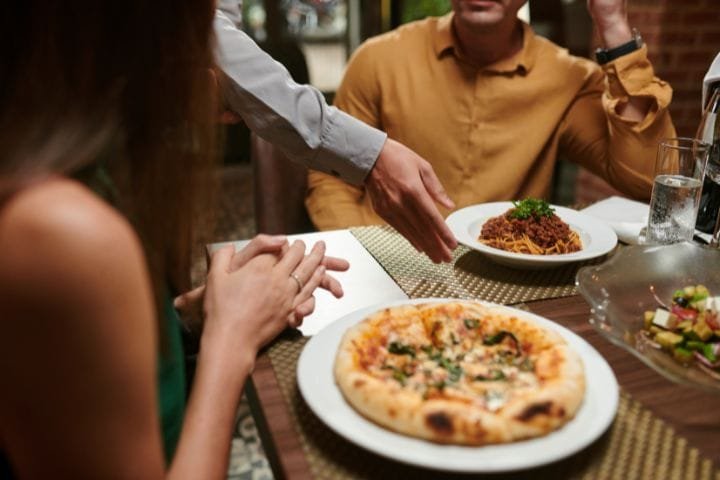
Michelin stars are nice, but family-run trattorias often provide more memorable experiences. In Modena, Osteria di Rubbiara serves tortellini in brodo using the owner’s grandmother’s recipe. Each tortellino is hand-folded and contains exactly the right amount of filling. At €12 per portion, it’s incredibly reasonable for such perfection.
Agriturismo restaurants represent farm-to-table dining at its finest. These working farms serve meals made entirely from their own ingredients. Fattoria Poggio Alloro in Tuscany grows vegetables, raises animals, and produces wine all on-site. Their €35 five-course dinners showcase seasonal ingredients prepared with techniques passed down through generations.
Northern Italy’s aperitivo culture is civilized day-drinking perfection. Milan bars serve elaborate food spreads with drink purchases. At Dry Milano Bar, a €12 cocktail includes access to a buffet that could easily substitute for dinner. It’s social, sophisticated, and delicious.
Italian Food Experiences and Cooking Classes Worth the Detour
Hands-on food experiences connect you with Italian culture in ways that restaurant meals can’t. Learning traditional techniques from local families creates lasting memories and skills you’ll use forever.
Pasta-making classes are everywhere, but the best happen in people’s homes. Through Traveling Spoon, I found Maria in Bologna who teaches in her actual kitchen. For €75, you get three hours of instruction, lunch, and recipes that actually work at home. Maria’s stories about her grandmother’s techniques are worth the price alone.
Truffle hunting in Umbria combines outdoor adventure with gourmet rewards. The dogs are incredible – they can detect truffles buried two feet underground. Our guide, Maurizio, has hunted truffles for 40 years, and his enthusiasm is absolutely infectious. Hunts cost €80 per person, but you keep whatever you find.
Pizza making in Naples is a serious business requiring proper instruction. Pizzeria Brandi offers classes with certified pizzaiolos who teach authentic techniques. Learning proper dough stretching took me four attempts – my first pizza resembled a very sad map of Italy. But by the end, I was creating actual circles that tasted incredible.
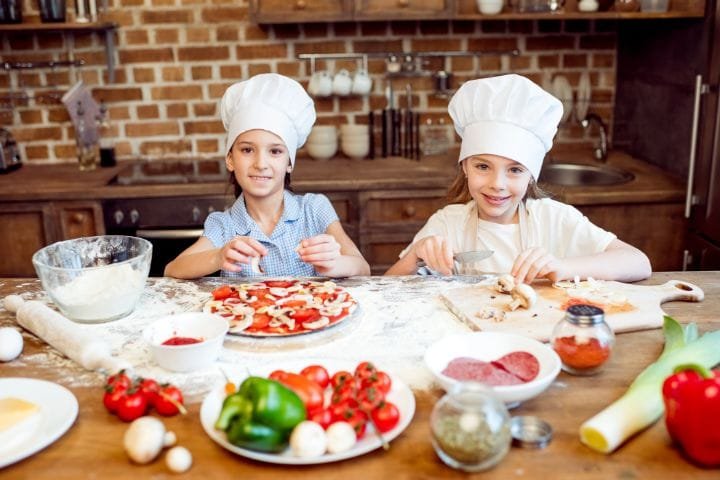
Here are the cooking experiences worth booking:
- Pasta making with nonnas – Authentic family kitchens in Bologna or Rome
- Truffle hunting – Umbria during the season with trained dogs and local guides
- Pizza workshops – Naples with certified pizzaiolos using traditional ovens
- Cheesemaking – Parmigiano-Reggiano factories in Emilia-Romagna
- Wine blending – Chianti vineyards, where you create custom bottles
Gelato-making classes reveal why Italian gelato surpasses all other frozen desserts. The technique involves slower churning and less air incorporation, creating denser, more flavorful results. Classes typically cost €50-70 and include tasting multiple flavors while learning the science behind perfect gelato.
Practical Tips for Your Italian Food Road Trip Success
Twenty years of food adventures taught me lessons I wish I’d known from the beginning. Some of these tips will save you money, others will save your sanity, and a few might save your marriage.
Pack a quality cooler for food souvenirs. Italian cheese and cured meats are incredible, but they won’t survive hot car rides. I learned this after €60 worth of pecorino turned into expensive, smelly soup in my trunk. A small electric cooler that plugs into your car’s power outlet is essential.
Navigation apps matter more than you think. Waze outperforms Google Maps on Italian roads because locals constantly update it with traffic, road closures, and speed trap locations. It works offline, which is crucial in rural areas with spotty cell service.
Learn basic food vocabulary beyond “pizza” and “pasta.” “Che cosa consigli?” (What do you recommend?) is magical – restaurant owners light up when you ask for suggestions. You’ll often get off-menu specials unavailable to other tourists.

Here’s the parking reality nobody mentions:
- Historic centers are often restricted to residents only
- Fines range from €85-150, and they will find you
- Park outside the city center and walk in
- Use parking apps like EasyPark or Parkopedia
- Hotel concierges know the best nearby parking options
Restaurant timing is non-negotiable. Lunch runs from 12:30-2:30 PM, and dinner starts at 7:30 PM. Arrive too early, and you’ll eat alone; too late, and the kitchens might be closed. Don’t request modifications to traditional dishes – it’s considered disrespectful to centuries of tradition.
Book accommodations with kitchenettes when possible. Not for cooking (you won’t want to after eating out constantly), but for storing leftovers, market finds. Having refrigerator space for cheese and salumi is essential.
Plan Your Trip with Our Favorite Booking Tools
Your Italian Food Adventure Starts Now
Living in Italy for twenty years hasn’t diminished my excitement about discovering new food experiences – if anything, it’s intensified it. Last month, I found a tiny gelateria that makes rosemary-pear gelato that shouldn’t work but absolutely does.
The magic of Italian food road trips isn’t just incredible meals – it’s the stories, traditions, and passionate people behind every dish. Every recipe carries history; every ingredient tells a story about the land and climate that produced it.
Don’t attempt to see everything in one trip. Choose three or four regions maximum and dive deep into their food cultures. Quality beats quantity every time, and you’ll definitely want to return. Italy has this way of getting into your bloodstream, and once you’ve experienced authentic Italian food culture, everything else feels like an imitation.
Start planning now, but leave room for spontaneity. Some of my greatest food discoveries happened when I got lost, took wrong turns, or followed intriguing smells down random streets. That’s the real magic of Italian food culture – it’s everywhere, waiting for curious travelers willing to venture off the beaten path.
Buon viaggio, and more importantly, buon appetito! Your taste buds are about to embark on the adventure of several lifetimes.
💬 We’d love to hear from you!
Have questions, tips, or personal travel stories to share? Drop them in the comments below — your insights help fellow travelers plan their adventures too.

